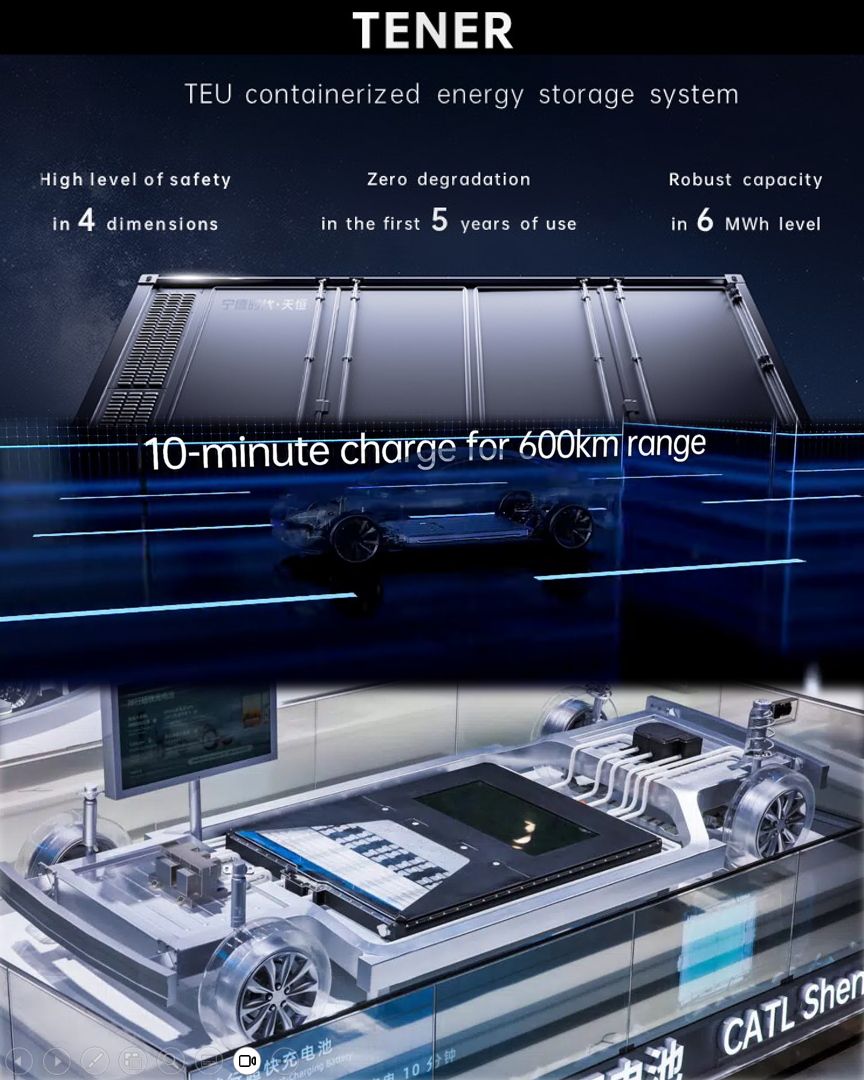10 minutes for 600 km range
CATL presents groundbreaking battery technologies: a wake-up call for the industry

The CATL Tech Day 2025 happened on April 21, 2025 in Shanghai. CATL presented three important battery technologies at this event.
Chinese battery giant CATL (Contemporary Amperex Technology Co. Limited) sent a clear message at its latest technology event: The future of electromobility starts now and it comes from China.
CATL presented three new battery models that set standards in two key disciplines: Range and charging speed. And not just in small steps, but with a technological leap that could reshape the balance of power on the global EV market.
The innovations at a glance:
- Shenxing Plus: Lithium iron phosphate (LFP) battery with a range of 1,000 km
The Shenxing Plus is a further development of the LFP battery, which enables a range of over 1,000 kilometers. The charging speed is particularly impressive: energy for 600 kilometers can be charged in just ten minutes, which corresponds to one kilometer per second. The energy density is 205 Wh/kg, which is remarkable for LFP cells. In addition, the charging performance remains stable even at low temperatures. - Condensed battery: energy density of 500 Wh/kg
The new condensed battery achieves an energy density of up to 500 Wh/kg, which is significantly higher than that of conventional lithium-ion batteries, which are typically between 250 and 300 Wh/kg. This high energy density makes them particularly attractive for applications in long-range electric vehicles and in aviation, where weight savings are crucial. - Tener battery: Stationary storage with 5 years without degradation
The Tener battery is a stationary energy storage system with a capacity of 6.25 MWh in a 20-foot container. It uses specially developed LFP cells with an energy density of 430 Wh/L and guarantees performance without degradation (decrease in capacity and charging speed) for five years. This represents a significant advance in renewable energy storage.
Why this is significant:
While European and US OEMs are still debating scaling, raw material access and cell production, CATL is delivering not just products, but platforms. The crucial point: these innovations are ready for series production.
Just a few years ago, China was often ridiculed as the West's extended workbench. Today, a company like CATL dictates the pace of innovation - with a self-confidence that is palpable. The Western automotive industry should ask itself: can we still keep up technologically if the innovation cycle suddenly comes from Ningde and no longer from Wolfsburg, Detroit or Stuttgart?
A question of strategic sovereignty
Dependence on Chinese cell technology is growing - not only for e-cars, but also in the energy sector. If CATL continues to adhere to its roadmap, we will be facing a paradigm shift that is not only technically relevant, but also geopolitically relevant. Europe needs its own answers - and faster than we might like.
Conclusion: What CATL presented at its technology event is not a vision of the future. It is a declaration of battle - to all those who believe that electromobility will remain a leisurely transformation process.







